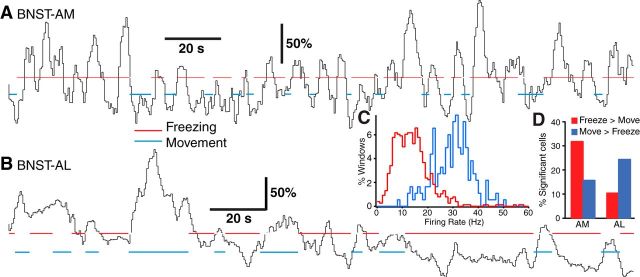Figure 4.
Inverse fluctuations in the firing rate of BNST-AM and BNST-AL neurons in relation to contextual freezing. Rats were subjected to a classical auditory fear conditioning protocol. The next day, while recording BNST neurons, rats were exposed to the conditioning context in the absence of CS. Rats froze 40%–50% of the time during exposure to the aversive context. A, B, Black traces represent average firing rates of 5 BNST-AM (A) and 3 BNST-AL (B) cells during epochs of contextual freezing (red lines) or movement (blue lines). C, For all available cells, multiple epochs of freezing (red) or movement (blue) were segmented and distribution of firing rates compared. D, Percentage cells with significantly different firing rates during freezing versus movement in BNST-AM versus AL. Red and blue bars represent cells with higher versus lower firing rates during freezing than movement. Modified from Haufler et al. (2013).

